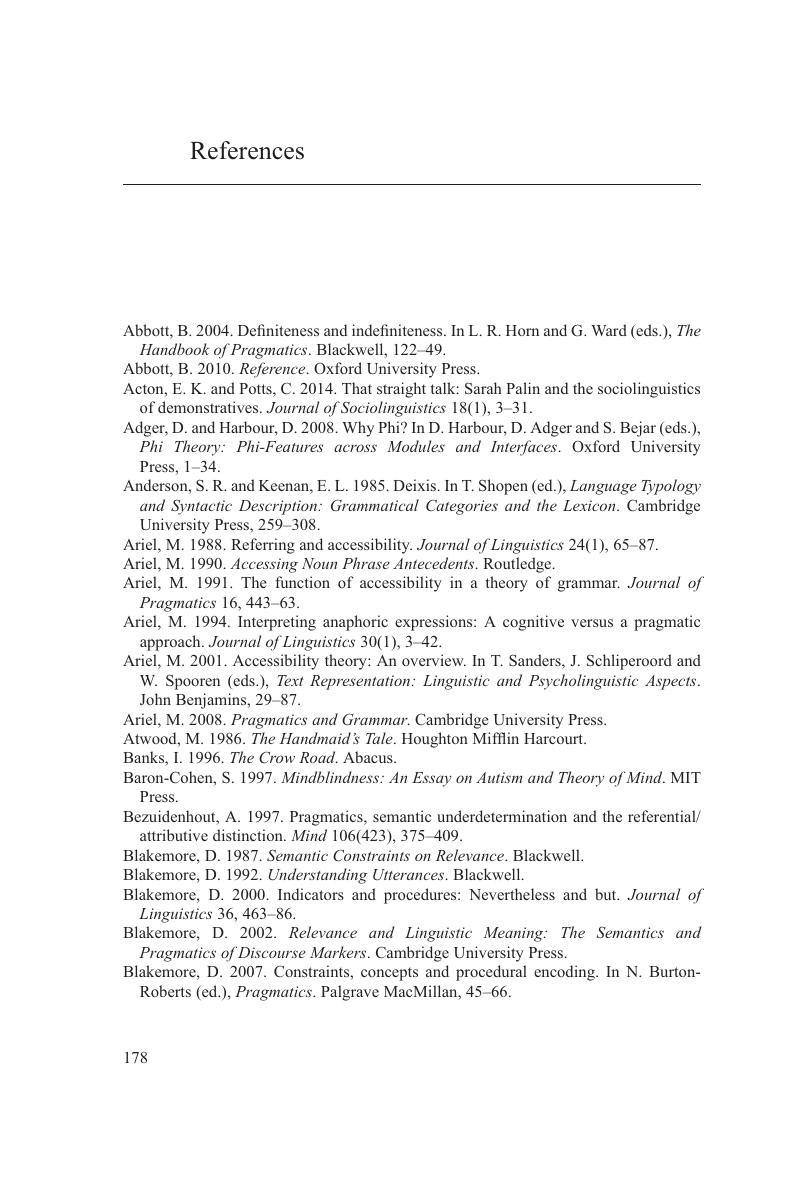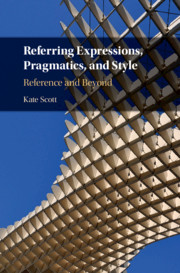Book contents
- Referring Expressions, Pragmatics and Style
- Referring Expressions, Pragmatics and Style
- Copyright page
- Dedication
- Contents
- Acknowledgements
- 1 Reference and Meaning
- 2 Relevance, Reference and Procedures
- 3 Pragmatic Activation Accounts of Reference and Referring
- 4 Definite Descriptions and Definite Procedures
- 5 Pronouns and Sub-personal Procedures
- 6 Null Referring Expressions
- 7 Demonstratives
- 8 Reference and Beyond
- References
- Index
- References
References
Published online by Cambridge University Press: 18 October 2019
- Referring Expressions, Pragmatics and Style
- Referring Expressions, Pragmatics and Style
- Copyright page
- Dedication
- Contents
- Acknowledgements
- 1 Reference and Meaning
- 2 Relevance, Reference and Procedures
- 3 Pragmatic Activation Accounts of Reference and Referring
- 4 Definite Descriptions and Definite Procedures
- 5 Pronouns and Sub-personal Procedures
- 6 Null Referring Expressions
- 7 Demonstratives
- 8 Reference and Beyond
- References
- Index
- References
Summary

- Type
- Chapter
- Information
- Referring Expressions, Pragmatics, and StyleReference and Beyond, pp. 178 - 186Publisher: Cambridge University PressPrint publication year: 2019

